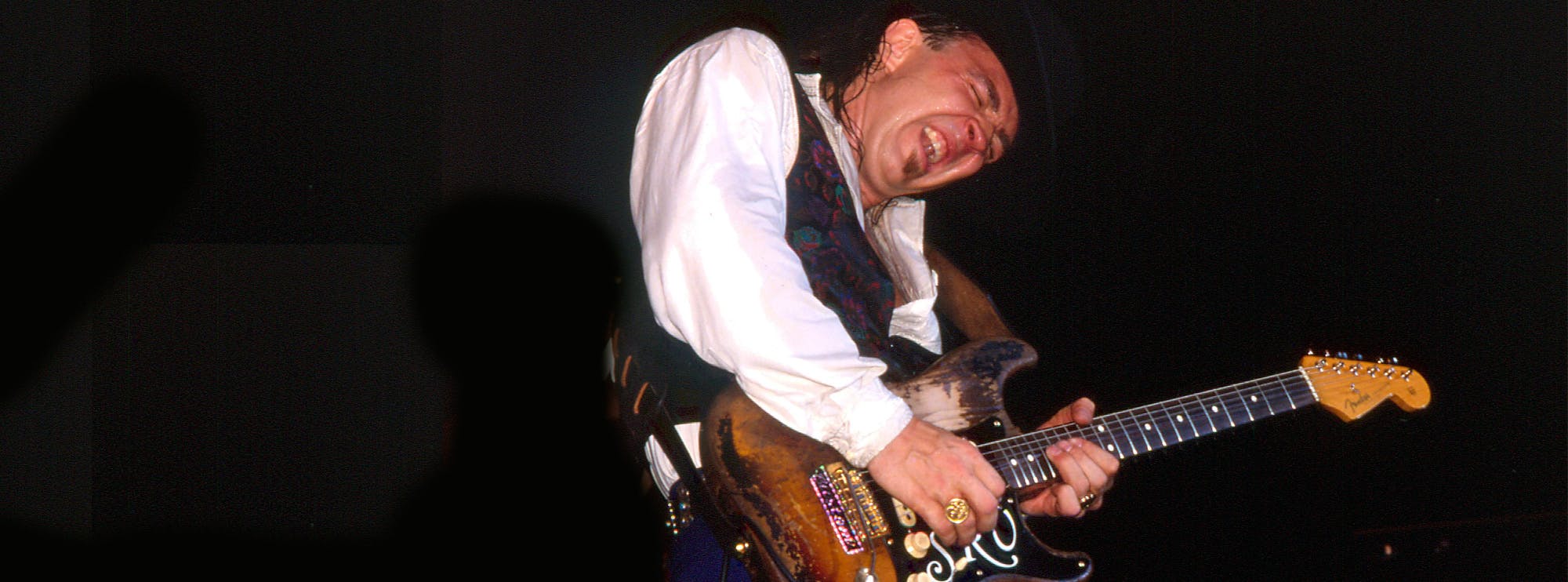Rebel Yell by Billy Idol
Learn how to play "Rebel Yell" by Billy Idol with Licklibrary's exclusive note-for-note guitar lesson. This iconic track is powered by the fiery guitar work of Steve Stevens, whose innovative playing shaped the sound of 1980s rock. Whether you're a beginner or an experienced guitarist, this lesson will take you through each element of the song, focusing on the various techniques that make the guitar work in "Rebel Yell" so distinctive. You’ll master everything from aggressive power chords to advanced techniques like tapped harmonics and dive-bombs, providing you with a comprehensive understanding of the song and the skills to improve your overall guitar playing. Andy James breaks down this iconic rock track in this exclusive Lick Library video tutorial.
Steve Stevens and His Influence
Steve Stevens is best known as the guitarist for Billy Idol, and his work on "Rebel Yell" is a shining example of his technical mastery and flair for the dramatic. His innovative approach combines traditional rock elements with advanced techniques, including his use of harmonics, two-handed tapping, and whammy bar tricks. Stevens' playing style is both melodic and aggressive, blending intricate solos with hard-hitting riffs that helped define the sound of '80s rock. Learning his style not only gives you insight into this era of music but also exposes you to creative ways of approaching the guitar that can enhance your own playing.
Song Breakdown
Intro Riff and Power Chords
The song kicks off with a driving intro riff, built around heavy power chords. Power chords are essential for rock and punk music, providing a full, powerful sound while being relatively simple to play. These chords, typically played with just two or three notes, are a great starting point for beginners looking to build strength in their fretting hand.
Benefits: Mastering power chords gives you a strong foundation in rhythm guitar playing, and they are used in countless other songs, making them highly versatile.
Palm Muting in the Verse
During the verses, Stevens utilises palm muting, a technique where the picking hand lightly rests on the strings near the bridge while strumming. This creates a percussive, muted sound that adds tightness and control to the rhythm sections. It’s especially useful in rock and metal music to create dynamic contrast between parts of a song.
Benefits: Palm muting enhances your ability to control dynamics and rhythm, allowing you to vary your playing intensity, crucial for building a dynamic performance.
Vibrato in the Pre-Chorus
As the pre-chorus builds, Stevens introduces expressive vibrato. Vibrato involves a slight back-and-forth bending of a note to give it a "wavy" sound, adding emotion and depth to the melody.
Benefits: Vibrato adds character and expressiveness to your playing. It is an essential technique for making solo lines sound more professional and polished.
Pinched Harmonics in the Chorus
The chorus explodes with energy, and part of its punch comes from Stevens' use of pinched harmonics. This technique produces high-pitched, squealing overtones by striking the string with both the pick and the edge of the thumb.
Benefits: Learning pinched harmonics will give you the ability to add texture and excitement to your playing, and it's a hallmark of heavy rock and metal guitar.
Two-Handed Tapping in the Solo
The solo in "Rebel Yell" features two-handed tapping, where Stevens taps notes on the fretboard with both hands, creating fast, fluid runs that are difficult to achieve using standard picking techniques. This signature move became iconic in the '80s shred style.
Benefits: Two-handed tapping allows you to play rapid, complex lines and adds an impressive, technical flair to your solos.
Dive-Bombs and Whammy Bar Tricks
Steve Stevens is known for his dramatic use of the whammy bar, and "Rebel Yell" features plenty of this. His use of dive-bombs, where the pitch of a note is drastically lowered using the whammy bar, adds a wild, chaotic sound that’s perfect for punctuating high-energy moments in the song.
Benefits: Mastering whammy bar techniques such as dive-bombs will give your playing a sense of drama and excitement, perfect for live performances or adding an edge to your solos.
Arpeggios in the Outro
The outro of the song features smooth arpeggios, where the notes of a chord are played individually in sequence. Arpeggios are crucial in many musical genres, and they add a delicate, flowing texture that contrasts nicely with the heavier riffing throughout the song.
Benefits: Learning arpeggios enhances your chord knowledge and finger dexterity, making you a more versatile player capable of tackling different musical styles.
Guitar Techniques Used in "Rebel Yell" Lessons
- Vibrato
- Power Chords
- Palm Muting
- Pinched Harmonics
- Two-Handed Tapping
- Dive-Bombs
- Arpeggios
- Whammy Bar Tricks
By mastering these techniques through the "Rebel Yell" lesson, you will not only learn how to play this iconic song but also improve your overall guitar skills, giving you the tools to tackle a wide range of styles and songs. This lesson will teach you how to blend melodic lines with aggressive rock techniques, allowing you to develop your own unique voice on the guitar.







